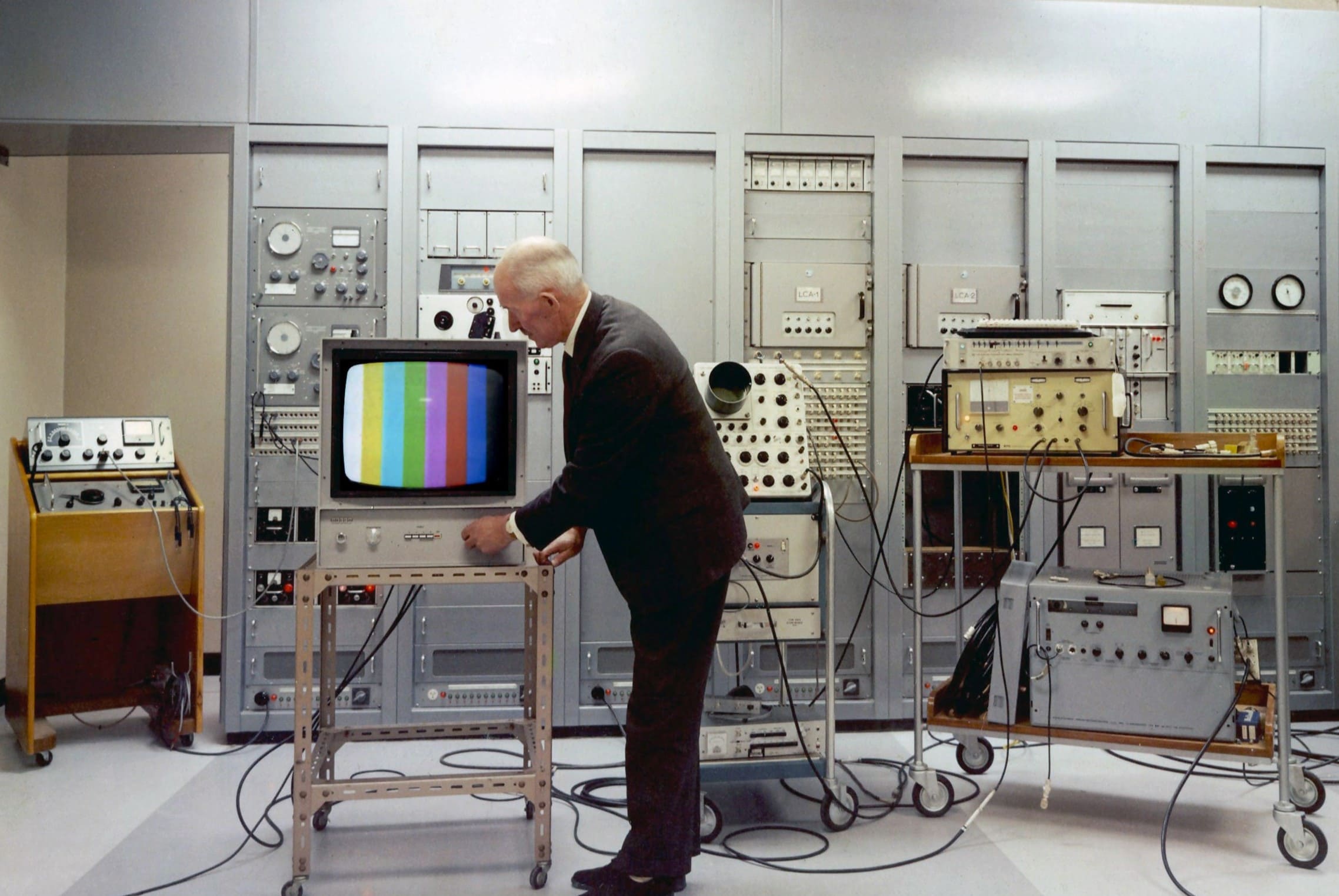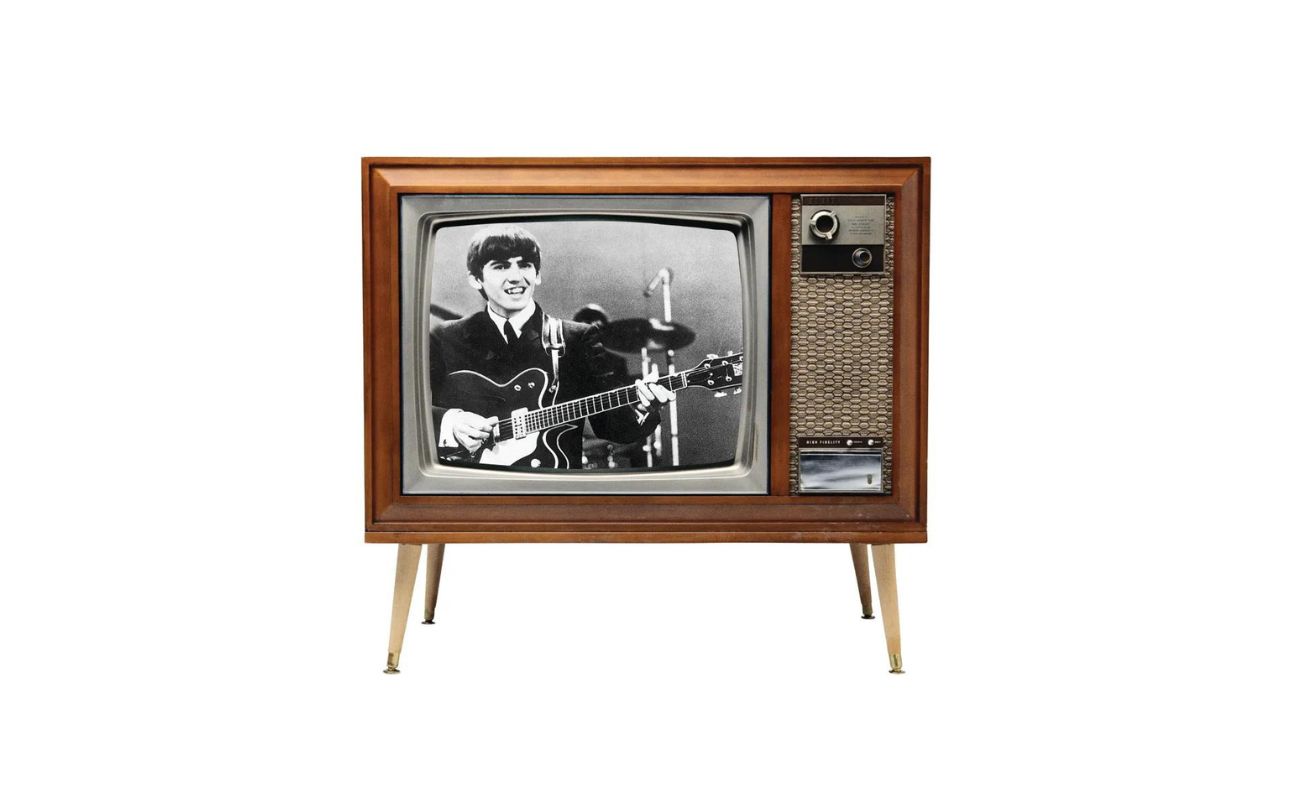Home>Technology>Home Entertainment Systems>When Was The First Color Television


Home Entertainment Systems
When Was The First Color Television
Modified: February 25, 2024
Discover the history of the first color television and its impact on home entertainment systems. Learn about the evolution of home entertainment technology.
(Many of the links in this article redirect to a specific reviewed product. Your purchase of these products through affiliate links helps to generate commission for Storables.com, at no extra cost. Learn more)
Introduction
Welcome to the fascinating world of color television! In today's era of high-definition displays and cutting-edge technology, it's easy to take the vibrant hues and lifelike images on our screens for granted. However, the journey to achieving color television was a remarkable and groundbreaking endeavor that revolutionized the way we experience visual entertainment.
The invention of color television represents a pivotal moment in the history of home entertainment systems, marking a significant leap forward in the evolution of broadcasting and consumer electronics. This article delves into the captivating story of how color television came to be, from the earliest experiments to the development of the first successful color television system.
Join us on a captivating journey through time as we explore the ingenuity, innovation, and technological advancements that culminated in the birth of color television. From the initial challenges and setbacks to the triumph of achieving true-to-life color reproduction on screens, the evolution of color television is a testament to human creativity and determination.
So, let's embark on this enthralling exploration of the invention of color television, tracing its origins, pivotal milestones, and the profound impact it has had on the way we consume visual media. Get ready to uncover the captivating history and pioneering achievements that have shaped the mesmerizing world of color television as we know it today.
Key Takeaways:
- The invention of color television was a remarkable journey marked by ingenuity, perseverance, and collaboration, forever altering the way we experience visual entertainment.
- Color television revolutionized the viewing experience, bringing vibrancy, realism, and emotional resonance to televised programming, shaping cultural perceptions and inspiring artistic innovation.
The Invention of Color Television
The quest to bring color to the television screen began long before the technology to achieve it was fully realized. In the early 20th century, as black-and-white television gained popularity, visionaries and inventors envisioned a future where the monochromatic world of television would be transformed into a vibrant tapestry of colors.
One of the earliest breakthroughs in the development of color television came in the form of the first color transmission experiments. In the 1920s, pioneers such as John Logie Baird and Georges Valensi conducted pioneering work in color television technology, laying the groundwork for the revolutionary advancements that would follow.
As the demand for color programming grew, so did the urgency to develop a viable color television system. This led to a wave of innovation and competition among engineers and scientists striving to crack the code of transmitting and displaying color images effectively.
The road to the invention of color television was fraught with technical challenges, including the need for compatible broadcast standards, the creation of color-compatible cameras, and the development of display technologies capable of rendering vivid and accurate colors. Overcoming these hurdles required a convergence of expertise in optics, electronics, and human perception, pushing the boundaries of scientific understanding and technological capability.
Amidst these challenges, the race to introduce color television to the masses gained momentum, fueled by the collective ambition of inventors, engineers, and industry leaders. The prospect of bringing the visual splendor of the natural world into living rooms across the globe spurred relentless innovation and investment in color television research and development.
Ultimately, the invention of color television stands as a testament to human ingenuity, perseverance, and the unyielding pursuit of progress. It represents a triumph of imagination and engineering, forever altering the way we engage with visual content and broadening the horizons of home entertainment.
As we delve deeper into the evolution of color television, we will uncover the pivotal moments and remarkable individuals who played a pivotal role in shaping the vibrant and captivating world of color television as we know it today.
Early Attempts at Color Television
As the desire to bring color to the television screen gained momentum, inventors and scientists embarked on a series of early attempts to achieve this ambitious goal. These endeavors marked the dawn of color television technology, characterized by pioneering experiments and the exploration of various methods to reproduce color images.
One of the earliest approaches to color television involved the use of mechanical methods for color transmission and display. Inventors such as John Logie Baird and his contemporaries experimented with rotating color discs and other mechanical devices to superimpose and synchronize color information with black-and-white images, aiming to create the illusion of color on the screen.
Simultaneously, researchers in the United States, including the renowned inventor and engineer, Charles Francis Jenkins, made significant strides in developing mechanical color television systems. Jenkins’ innovative work laid the groundwork for subsequent advancements in color television technology, setting the stage for the transformative breakthroughs that would follow.
However, mechanical approaches to color television posed inherent limitations, including the complexity of synchronization, the need for precise mechanical components, and the challenge of achieving high-resolution color reproduction. These limitations spurred the exploration of alternative methods that could overcome the technical constraints of mechanical systems.
Another pivotal development in the early history of color television was the introduction of electronic color transmission and display technologies. This marked a paradigm shift in the pursuit of true color reproduction, leveraging the emerging field of electronic imaging to achieve more sophisticated and reliable color rendering.
One of the pioneering figures in electronic color television was the inventor and engineer, Peter Goldmark, whose groundbreaking work at CBS Laboratories led to the development of the field-sequential color system. This innovative approach utilized a rotating color wheel and synchronized electronic circuitry to sequentially display red, green, and blue components of the image, creating the impression of full-color imagery.
These early attempts at color television laid the foundation for the revolutionary strides that would ultimately bring vibrant, lifelike color to television screens worldwide. The convergence of mechanical ingenuity and electronic innovation set the stage for the next chapter in the evolution of color television, paving the way for the realization of a fully integrated and commercially viable color television system.
As we delve deeper into the early milestones of color television, we will uncover the pivotal breakthroughs and visionary individuals who propelled the technology forward, shaping the captivating and colorful landscape of modern television entertainment.
The first color television was introduced to the public in 1954 by RCA, but it wasn’t until the 1960s that color TV became widely popular in households.
The First Successful Color Television System
The culmination of decades of relentless innovation and technological advancement led to the realization of the first successful color television system, marking a watershed moment in the history of visual media and broadcasting. This monumental achievement represented the convergence of scientific ingenuity, engineering prowess, and the collective pursuit of bringing vibrant color to the television screen.
One of the most significant milestones in the development of color television was the introduction of the NTSC (National Television System Committee) color television standard in the United States. The NTSC standard, adopted in the 1950s, established the technical specifications and protocols for color television broadcasting, providing a framework for the transmission, reception, and display of color images.
The NTSC standard laid the groundwork for the successful implementation of compatible color television systems, enabling broadcasters and manufacturers to synchronize their efforts in delivering color programming to viewers across the country. This pivotal standardization effort represented a crucial step towards achieving widespread acceptance and adoption of color television technology.
Simultaneously, the development of color television receivers capable of decoding and displaying NTSC color signals played a pivotal role in realizing the vision of color broadcasting. This ushered in an era of consumer accessibility to color television sets, allowing households to experience the captivating allure of full-color programming in the comfort of their living rooms.
One of the pioneering color television sets that captured the imagination of consumers was the RCA CT-100, introduced in 1954. This groundbreaking television set, produced by the Radio Corporation of America (RCA), represented a significant leap forward in consumer electronics, offering a stunning display of vivid colors and ushering in a new era of immersive home entertainment.
Furthermore, the successful implementation of compatible color television systems and the widespread availability of color television sets paved the way for the production and broadcast of captivating color programming, including iconic shows, live events, and cinematic masterpieces that dazzled audiences with their vibrant visual splendor.
The achievement of the first successful color television system stands as a testament to human innovation, collaboration, and the unwavering pursuit of enhancing the viewing experience. It heralded a new chapter in the evolution of television, forever altering the way we engage with visual content and immersing audiences in a world of captivating color and lifelike imagery.
As we delve deeper into the impact of color television, we will unravel the profound influence it has had on the realms of entertainment, culture, and the collective imagination, shaping the vibrant and captivating landscape of modern television as we know it today.
The Impact of Color Television
The advent of color television heralded a transformative era in the realm of visual media, leaving an indelible mark on the way we consume entertainment, shaping cultural perceptions, and redefining the boundaries of creative expression. The widespread adoption of color television systems revolutionized the viewing experience, captivating audiences and enriching the tapestry of visual storytelling in profound ways.
One of the most profound impacts of color television was its ability to elevate the immersive quality of visual content, imbuing it with a newfound sense of vibrancy and realism. The introduction of color brought a heightened level of engagement and emotional resonance to televised programming, allowing viewers to experience the full spectrum of visual storytelling in all its captivating glory.
Furthermore, the advent of color television opened new avenues for creative expression and artistic innovation, empowering filmmakers, content creators, and broadcasters to explore the boundless potential of color as a storytelling tool. From the breathtaking landscapes of nature documentaries to the dazzling spectacle of cinematic blockbusters, color television became a canvas for evocative visual narratives, enriching the cultural tapestry of televised entertainment.
The impact of color television extended beyond the realm of entertainment, permeating the collective consciousness and shaping cultural perceptions of the world. The vibrant hues and lifelike imagery brought into homes across the globe fostered a sense of interconnectedness with distant places, cultures, and experiences, fostering a deeper appreciation for the diversity and beauty of the world.
Moreover, the widespread adoption of color television systems catalyzed a shift in consumer preferences and viewing habits, fueling a demand for high-quality, color-rich content that captivated and inspired audiences. This propelled the television industry to embrace technological innovation and artistic creativity, driving the evolution of visual storytelling and broadcasting standards.
From the iconic televised events that captured the world’s imagination in vivid color to the timeless classics that continue to enchant audiences, the impact of color television on the collective imagination remains profound and enduring. It has left an indelible legacy, shaping the way we experience visual narratives and forging an inseparable link between color and the art of storytelling.
As we reflect on the impact of color television, we recognize its role as a catalyst for cultural enrichment, artistic expression, and the universal language of visual storytelling. It continues to inspire, captivate, and unite audiences across generations, embodying the timeless allure of color as a conduit for immersive and transformative entertainment experiences.
Read more: When Did The First Television Come Out
Conclusion
The journey from the inception of color television to its widespread adoption and enduring impact has been a captivating odyssey, defined by the relentless pursuit of innovation, the convergence of scientific and artistic vision, and the transformative power of technology. The evolution of color television stands as a testament to human ingenuity, creativity, and the unyielding quest to enrich the visual landscape of entertainment.
From the early experiments and pioneering breakthroughs to the realization of the first successful color television system, the story of color television is a testament to the collective ambition and collaborative spirit that drove the technology forward. It represents a triumph of human endeavor, forever altering the way we engage with visual content and broadening the horizons of home entertainment.
The impact of color television reverberates through the realms of culture, storytelling, and the collective imagination, leaving an indelible mark on the way we perceive and experience visual narratives. Its introduction brought a newfound sense of vibrancy, realism, and emotional resonance to televised programming, captivating audiences and shaping cultural perceptions in profound ways.
As we reflect on the enduring legacy of color television, we recognize its role as a catalyst for artistic expression, technological innovation, and the universal language of visual storytelling. It continues to inspire, captivate, and unite audiences across generations, embodying the timeless allure of color as a conduit for immersive and transformative entertainment experiences.
The evolution of color television is a testament to the boundless potential of human creativity and the enduring impact of technological advancements on the way we experience the world. It serves as a reminder of the profound influence of color as a medium for artistic expression and cultural enrichment, shaping the vibrant and captivating landscape of modern television as we know it today.
As we celebrate the remarkable journey of color television, we embrace its legacy as a testament to the transformative power of technology, the enduring allure of visual storytelling, and the indelible mark it has left on the collective imagination. The captivating world of color television continues to inspire, enchant, and unite audiences, embodying the timeless enchantment of color as a gateway to immersive and evocative entertainment experiences.
Frequently Asked Questions about When Was The First Color Television
Was this page helpful?
At Storables.com, we guarantee accurate and reliable information. Our content, validated by Expert Board Contributors, is crafted following stringent Editorial Policies. We're committed to providing you with well-researched, expert-backed insights for all your informational needs.















0 thoughts on “When Was The First Color Television”